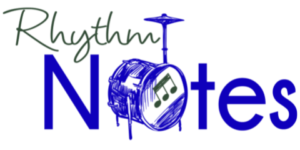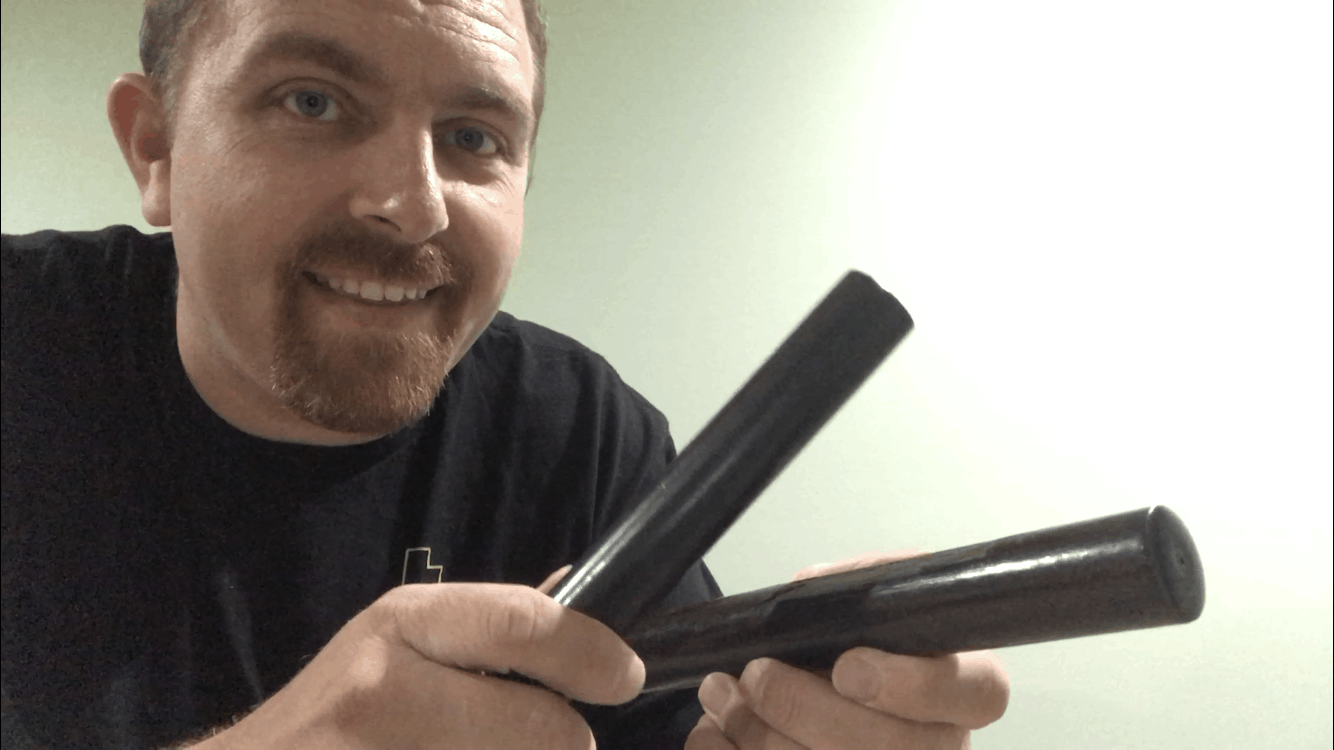The beat on the song “Bo Diddley” (by Bo Diddley) is a 3-2 son clave rhythm. Or, is it straight from the West African bell pattern brought to the Americas via the slave trade? Bo says it was influenced by his gospel upbringing, and experts say it’s based on the traditional hambone rhythm. Either way, it’s clave and has African roots.
Clave is a two-bar rhythmic pattern that developed from one of the African bell patterns that came to the Americas aboard slave ships. The instrument, also called clave, was fashioned from Cuban hardwood used for pegs in the shipbuilding process. Since the slaves from Africa were not allowed to bring their musical instruments, they made new ones from what was available.
Bo’s use of clave has been one of the most recognizable syncopated dance rhythm in its 1955 recorded form. It’s clearly based on rhythms that developed after West African music was re-invented in the Americas. Although the present use of clave is rather clear, it’s history leaves some questions to be answered.
Clave: The Instrument
Clave is made from hardwoods like rosewood, grenadilla, or ebony. Some designs include a larger one and a smaller one. The larger one is the female (or hembra) and the smaller one is the male (or macho). The macho strikes the hembra, even if both are the same size.
The hembra is cradled facing up in one hand while the macho is used to strike the hembra. It’s important to note that different hardwoods react in unique ways, so you may have to find a sweet spot for a good sound. Most importantly, if it’s hard to get a sharp sound, adjust your cradle grip – perhaps you are holding it too tightly as to not let it resonate.
African Bell
Although there are a handful of bell patterns in West African music, the few that survived the Middle Passage across the Atlantic are the roots of clave and Afro-Caribbean music. Their existence proves that slaves were not stripped of their African culture and heritage.
The most common bell pattern you’ll hear is in 6/8 (or 12/8). It’s main accents, when extracted from the bell pattern, are the 6/8 clave. This rhythm is essentially rumba clave in a different meter.
Try practicing the African bell pattern by feeling or stepping the dotted quarter-note pulse. That’s the main pulse of the dances that followed this pattern – Ewe master drummers from Ghana will often play this pulse in one hand on the side of the drum while playing the bell pattern with the other.

Rumba Clave
If you take the 6/8 clave and play it in 4/4, you’ll have rumba clave. This is the pattern used for guaguancó in both Havana and Matanzas. But consider playing the rhythm somewhere in between 4 and 6 – something Michael Spiro calls “fix.”
The side of the clave rhythm with three hits is called the three side. This is most often the side that is played first for rumba clave. The two side has two hits and answers the three side. This call and response is a characteristic of West African music that you’ll hear all throughout the Afro-Caribbean world.

Clave is the key to the music. It’s the part to which all other parts relate. Vocals start in specific relationships to the clave, depending on the song, as do the drum parts. For example, the middle drum in guaguancó (the segundo) is played on beat one of the two side while the tumba drum is played on beat four of the three side. This relationship is found in both religious and secular musical traditions in Afro-Cuban culture.
Son Clave
The mambo is one of the most recognizable styles of music played by a salsa band. It’s piano montuno, timbale bell parts, and tumbao played by congas and bass are all interlocked with the son clave.
Son clave has two sides, similar to the rumba clave. The only difference between the two claves is on beat 4. The son is played on the downbeat while the rumba is played on the upbeat.
Another difference between the two claves is the common side that that they start. Son clave often starts with the two side. This isn’t a rule, and you will find mambos that are 3 / 2, but 2 / 3 son is more prevalent.
2-3

3-2

In both clave rhythms, the upbeat of beat 2 on the 3 side is the bombo. This is accented by congas when the song goes into the up section when the dynamics increase. It is also accented by the tumba part on most Afro-Cuban rumbas.
The ponche is another important clave accent. It lands on beat four of the measure and is accented by tumbao patterns as well as ensemble breaks and entrances, to name a few examples.
Related: Son Clave – 10 Ways to Play It on Drum Set.
Clave Rhythm in Brazil
In my experience, Brazilian music is less strict in terms of the clave having sides that must be specific to the songs vocal and drum parts. Although there are specific parts in a samba that play clave rhythms, it is not the key to Brazilian music.
The easiest way to recognize a Brazilian approach to clave is the accent patterns played on a bossa nova. The guitar and pandeiro often play these accents, but you’ll hear drum set parts adopt these accents. It starts like 3 / 2 son clave and the second measure shifts the second hit of the 2 side to the up beat. So, I guess there’s only one small difference.

My theory on the nature of the Brazilian clave being played slightly more improvisational is because of the guitar and pandeiro playing the rhythm and other parts that relate, including improvised fills. I don’t think there is a known reason why Brazil and Cuba developed ideas about clave so differently, but my theory could be combined with a confluence of factors to give you a better answer.
I remember playing parts that resembled clave in the University of North Texas Brazilian Ensemble. The tamborim parts were the most interesting because I heard rumba, son, and clave rhythms with added Brazilian rhythms. This use of the rhythm as a theme versus a keystone to the music is heard throughout Brazilian music.
Work Songs on North American Plantations
African American music during slavery was performed for religion, other ceremonies, and to drive work. Songs were even sung by field hollerers to signal master activity to the workforce. Field hands also sang in groups to maintain pace among the workers.
Clave is not often explicit in the worksongs, so it’s hard to comment on the connection. It is, however, easy to hear the influence on jazz and blues styles that combine with work songs, spirituals, and other call and response African American music to make some our most beloved genres of music.
Modern Pop Music Clave Rhythm
Aside from the hand jive rhythms that you’ll hear on songs by the Grateful Dead, Eric Clapton, and, of course, Bo Diddley, the clave rhythm can be found in many pop songs. One for the most explicit examples is “Rhythm is Gonna Get You” by Gloria Estefan and Miami Sound Machine.
For information on the Bo Diddley beat on drum set, check out this article with blues grooves, including one with the 3:2 son.
George Michael’s “Faith” is a song that uses clave as the predominant rhythm played by almost all of the rhythm section instruments. If the bass line isn’t playing exactly clave, it’s walking some passing tones to fill in and establish the harmony.
The drum set part on “Valerie” by Amy Winehouse is the only instrument playing clave. The horns are playing a mixture of short figures to contrast the long goose eggs the synth and guitar are hanging on.


